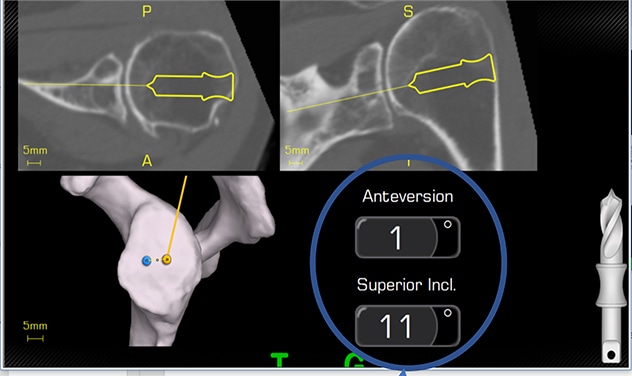Feb. 16, 2021
Although preoperative planning for shoulder arthroplasty is common, surgeons performing the procedure are often unable to precisely position the component in vivo. Mayo Clinic's campus in Florida uses computer-guided intraoperative navigation to help ensure the proper placement of glenoid components.
"You can plan extensively. But without intraoperative navigation, it's difficult to replicate the planned component position. With intraoperative guidance, we can get the component to the spot where we want it to be," says Bradley S. Schoch, M.D., an orthopedic surgeon at Mayo Clinic in Jacksonville, Florida.
Dr. Schoch has been performing computer-guided shoulder arthroplasty for about three years. Long-term data are needed to determine the effect of component navigation on clinical outcomes. However, it's well established that implant retroversion exceeding 10 degrees can cause component loosening. That type of positioning error is common, according to Dr. Schoch's research.
In a retrospective review of primary shoulder arthroplasties, Dr. Schoch and colleagues from the University of Florida observed component malposition in 48% of shoulder arthroplasty cases performed using 3D preoperative planning without navigation. The errors were accentuated in surgeons without completed fellowship training. But even in cases performed by fellowship-trained attending surgeons, the malposition rate was 38% without navigation.
"We know that even experienced surgeons can be inconsistent in replicating the planned component placement," Dr. Schoch says. "With intraoperative technology, we can eliminate those outliers."
The researchers defined component malposition as displacement of more than 4 millimeters, or an error in version or inclination of more than 10 degrees. The surgeries were planned using both multiplanar 2D CT and 3D implant overlays.
Guía intraoperatoria para artroscopia de hombro

Guía intraoperatoria para artroscopia de hombro
La guía intraoperatoria hace coincidirla colocación de los componentes quirúrgicos con el plan preoperatorio, incluyendo mediciones de ángulo (círculo azul).
Computer-guided shoulder arthroplasty can be especially helpful for patients with severe bone loss or abnormal socket architecture. The intraoperative guidance provides real-time data relative to the pre-surgical plan. "The line-of-sight guidance allows us to line up our procedure with the pre-surgical plan, using a target on a screen," Dr. Schoch says.
He and his research colleagues plan further studies comparing computer-guided shoulder arthroplasty in patients with varying types of glenoid morphology, such as biconcave glenoid. "The visual landmarks of the scapula are limited intraoperatively," Dr. Schoch says. "The inability to accurately execute a preoperative plan may increase the risk of component failure. With intraoperative guidance, you can put it where you plan it."